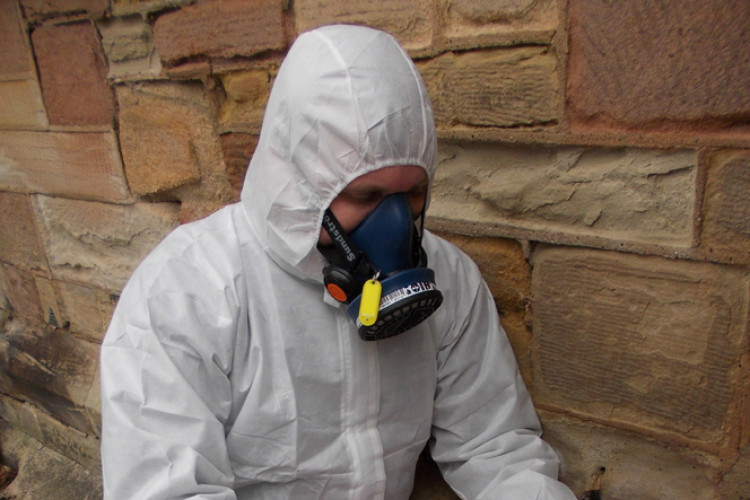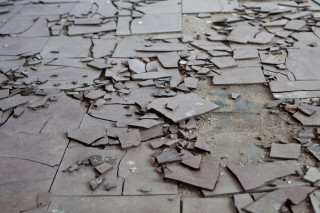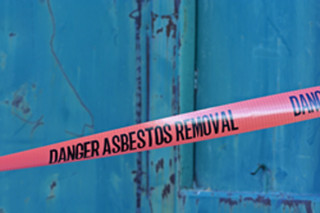When the Asbestos Prohibition (Amendment) Regulations 1999 banned the import, supply and use of asbestos and asbestos-containing materials (ACMs) in the UK, HSE guidelines stated that no asbestos fibrous minerals should be contained within commercial and non-domestic buildings constructed after the year 2000.
Over the course of more than 150 years, an estimated six million tonnes of asbestos have been imported into the UK for use in a variety of industrial applications, construction foremost amongst them.
A substantial amount of this material still remains in an estimated one-and-a-half million commercial buildings, as well as in over two million private domestic properties.
While the majority of these will be buildings constructed prior to the 1999 ban there have, according to one asbestos specialist, been many occasions where asbestos will have been physically transported into new, post-2000, premises without the knowledge of the people living or working in them.
Socotec, a specialist in testing, inspection and compliance based in Burton upon Trent, says that significant quantities of asbestos still managed to find their way into new buildings through a loophole that excluded materials that were already in use prior to the ban being enforced.
“As a result, existing stocks of materials and products containing the material were permitted to remain active until they reached the end of their service life,” explains James Dodgson, commercial director for Socotec’s asbestos division. Exemptions on the use of chrysotile, more commonly known as ‘white asbestos’, were still in place until as late as 2005, he says.
As the ban did not legally mandate the removal and eradication of asbestos-containing products, it is reasonable to assume that such materials that were well within their service life could easily have been used in properties constructed after the year 2000.
There have also been cases where stockpiled ACMs have been used throughout the construction supply chain, particularly when taking importation legislation into account. Although British law states that all imports coming into the UK should be declared 100% free from asbestos, the declaration level outside of the UK varies considerably.
Asbestos content in the EU can be 0.1% and the product can still qualify as ‘asbestos-free’. In the US, asbestos-free is defined as containing up to 1% asbestos. And some Asian jurisdictions consider ‘asbestos-free’ to mean anything less than 10% asbestos content. “So, clearly, there is still scope for ACMs to be imported into the UK,” concludes Dodgson.
Another example of asbestos discovery within buildings constructed after the 1999 ban is on brownfield sites, particularly when pre-2000 commercial and industrial buildings are demolished or redeveloped to make way for new premises.
Asbestos might be discovered lurking in the soil, rubble and debris of brownfield sites for any number of reasons. For example the site might have been used for fly tipping; or maybe the redeveloped site was demolished prior to the implementation of the asbestos ban.
It can also find its way onto a site when those responsible for the redevelopment works haven’t taken the time and care to dispose properly of construction materials. Or perhaps they have used asbestos-contaminated soil as topsoil or backfill.
Valued for its insulating, heat resistant and strengthening properties, asbestos was widely used as a raw material within a range of different construction products in the latter half of the 20th century, including roofing, sprayed and textured coatings, insulation materials, ceiling and wall panels, cladding, floor and roof tiles, textiles, soffits, water tanks, pipe lagging and gutters.
Its versatility meant that it could crop up in virtually any locations within a building, from airing cupboards and fuse boxes to fireplaces and boilers.
Asbestos insulation board and cement also featured prominently in common household objects of the late 20thcentury, having been incorporated into such products as hairdryers, safes, dishwashers, ovens, washing machines, toasters and ironing boards.
“It’s even been found in consumer products as diverse as toilet seats, jewellery, cameras, radios, crayons, books, toys – even talcum powder and cosmetics,” says Dodgson. He says that, strictly speaking, antique collectors are under a duty of care to check their acquisitions for asbestos before bringing them onto habitable premises. “It might seem unlikely, but this is yet another route by which asbestos can be find its way into a post-2000 property.
“Over the years, members of our asbestos team have uncovered the fibrous mineral on a wide range of premises constructed after the nationwide ban,” says Dodgson.
“It is extremely common for older plant and equipment to be transferred into ‘newer’ buildings, either due to the fact that it is asbestos-containing or it has been brought in from a site surrounded by the hazardous fibres,” adds Dodgson. This was the case in a UK prison surveyed in the early 2000s, which was found to be contaminated with asbestos following the discovery of plant, containing asbestos gaskets, that had been transferred from an older building.
“Similarly, an old factory site full of asbestos was closed and relocated to a brand new, purpose-built facility constructed in 2004. As this was built after the ban, it was presumed that no ACMs were used within the construction materials, with no asbestos reinspection required. However, a group of old industrial ovens were transferred from the older site and into the new factory, all of which were asbestos-containing,” continues Dodgson.
As previously mentioned, stockpiled construction materials have often been the cause of newer buildings becoming contaminated with asbestos fibres. Due to the fact that the 1999 legislation allowed asbestos-containing materials to be used until the end of their service life, it was common practice for builders to hold onto these or salvage them from damaged or demolished structures to be used again.

This was the case during an asbestos survey of a school in 2002, where a surveyor noticed that the contractor was re-roofing the veranda using asbestos-containing tiles.
The general rule of thumb for duty-holders or owners of buildings constructed after the year 2000 is to presume that there will be no asbestos located on the premises. But the evidence demonstrates that it is still good practice to remain vigilant about the possibility of this fibrous and potentially lethal mineral being present. In particular, close attention should be paid to any ageing electrical equipment that has been transported into the building, or if post-2000 premises are built on existing basements or linked to adjoining structures.
Contrary to popular belief, legislation and HSE guidance currently recommends that any asbestos-containing material can be left alone if it is in good condition and unlikely to be disturbed or damaged, since it is only harmful to health when fibres are released into the atmosphere.
However, if a material is presenting signs of ageing, is damaged or deteriorating, or if repairs or refurbishment are to take place on or near to the material, it is recommended that a suitably-trained and qualified specialist is called in to survey the level of risk and recommend remedial action.
Control of asbestos: who’s responsible?
UK asbestos regulations were last updated with the Control of Asbestos Regulations 2012 (CAR12) which came into force in April of that year.
The new regulations were a response to the European Commission’s ruling that the UK had not fully implemented the 2009 EU Directive on exposure to asbestos.
Regulation 4 of CAR12 sets out the ‘duty to manage’ asbestos, which falls upon those who manage non-domestic premises and have responsibility for protecting others who use the premises. The identity of the duty-holder depends upon the legal relationship between the owner, leaseholder or tenant according to the terms of any tenancy agreement, if applicable.
The duty to manage asbestos requires the duty-holder to:
• take reasonable steps to find out if there are materials containing asbestos in non-domestic premises, and if so, its amount, where it is and what condition it is in
• presume materials contain asbestos unless there is strong evidence that they do not
• make, and keep up-to-date, a record of the location and condition of the asbestos-containing materials - or materials which are presumed to contain asbestos
• assess the risk of anyone being exposed to fibres from the materials identified
• prepare a plan that sets out in detail how the risks from these materials will be managed
• take the necessary steps to put the plan into action
• periodically review and monitor the plan and the arrangements to act on it so that the plan remains relevant and up-to-date
• provide information on the location and condition of the materials to anyone who is liable to work on or disturb them
There is also a requirement on others to cooperate as far as is necessary to allow the duty-holder to comply with the above requirements. Source: HSE
This article was first published in the March 2020 issue of The Construction Index magazine.
UK readers can have their own copy of the magazine, in real paper, posted through their letterbox each month by taking out an annual subscription for just £50 a year. Click for details.
Got a story? Email news@theconstructionindex.co.uk





